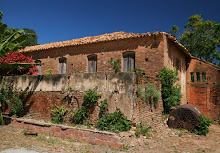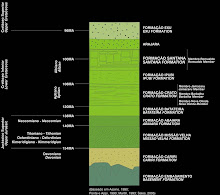
The basis for all activities which lead to Vulkaneifel Geopark is the unique geological situation within the western part of the Rhenish Slate Mountains, in the city of Daun, in Germany. The concentration and variety of maar-craters give the Vulkaneifel an outstanding position among the worldwide volcanic regions.
Nearly 350 eruption centers recount from the igneous and exciting history of the Vulkaneifel. Five Geo-museums and numerous geo-sites reveal scientific phenomena and selected pathways and bicycle-routes guide the visitor to the treasures of a fascinating landscape.
Within the volcanic belt of 50 km of length and approx. 20 km of width until present 75 maar-craters are known. Eight craters are still filled with water and they called of the "Eyes of the Eifel".
The geological heritage is moreover manifold. Beside the volcanic landscape the Vulkaneifel reveals the geological history of the last 400 Million years. The Eifel-North-South Zone is an area built by synclines of middle-devonian age are known. This zone, ranging from the town Mechernich, towards the south to an area 20 kilometers north from Bitburg. In the southern part of the Eifel-Zone basaltic volcanism took place and today it is known as Westeifel Volcanic Field.
Already in the 19th century paleontologists visited the Eifel region to find a large variety of fossils of Devonian age, crinoids and trilobites as well as reef organisms, some similar, but some different from those found in Devonshire. Many paleontologists, structural geologists and raw material engineers investigated the Paleozoic sequences of this region during the last two centuries
Nearly 350 eruption centers recount from the igneous and exciting history of the Vulkaneifel. Five Geo-museums and numerous geo-sites reveal scientific phenomena and selected pathways and bicycle-routes guide the visitor to the treasures of a fascinating landscape.
Within the volcanic belt of 50 km of length and approx. 20 km of width until present 75 maar-craters are known. Eight craters are still filled with water and they called of the "Eyes of the Eifel".
The geological heritage is moreover manifold. Beside the volcanic landscape the Vulkaneifel reveals the geological history of the last 400 Million years. The Eifel-North-South Zone is an area built by synclines of middle-devonian age are known. This zone, ranging from the town Mechernich, towards the south to an area 20 kilometers north from Bitburg. In the southern part of the Eifel-Zone basaltic volcanism took place and today it is known as Westeifel Volcanic Field.
Already in the 19th century paleontologists visited the Eifel region to find a large variety of fossils of Devonian age, crinoids and trilobites as well as reef organisms, some similar, but some different from those found in Devonshire. Many paleontologists, structural geologists and raw material engineers investigated the Paleozoic sequences of this region during the last two centuries
Vulkaneifel first became famous for its fossils of lower and middle Devonian age.The situation up to today has changed. Many of the former "Fossil pits" are nature protected areas. Economically the region became famous for its mineral water resources.
More infomations site: http://europeangeoparks.org/





Nenhum comentário:
Postar um comentário